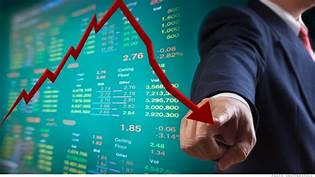Planning to redeem in this correction? Think again
Is difficult to say that Market bottomed out?

Oct 09 2019 16:04 PM
Its been roughly five months into what some have termed as a brutal correction in the domestic equity markets. While large cap indices are down 8%-9% in this period, the correction from the peaks in small and mid-cap indices has continued for 18 months or so, with the index level as steep as 25%-35%.
We are now hearing voices from equity market stalwarts claiming markets may be close to bottoming out. Which implies that this could be a good time to take the plunge and buy more equity.
How can one tell?
Some reports cite the low earnings multiple for certain segments in the market. Another indicator they point to is the difference between the earnings yield on equity versus the bond yield. A narrowing yield offers equity at a good buy price. A below average market-capitalisation to GDP ratio once again signals that equity prices may have perhaps fallen enough now. The forward valuations or the expected earnings to price ratio for mid and small cap stocks is also below the historical average.
These signals are not easy to grasp for the average investor and while all these metrics may be correct in signalling that prices in equity markets are low, should it matter to you?
Does it matter… not really
If you are a long-term investor with goal linked investments, keep your focus on regular investments required to reach the goal. Your goals are unlikely to have changed with better valuations and prices in equity markets. If your goals haven’t changed then the amount you are already investing or allocating to these goals shouldn’t change. If you are a regular investor, you are unlikely to have much surplus money lying around to jump into equities at these valuations. At the most you should feel happy that you invested through a correction which has helped you buy equity at a cheaper price and now you can wait and watch it grow in value.
Yes, but can you be sure that markets won’t go lower? And if they do, will you be able to stomach further losses on the fresh money you put in thinking that the market bottom is an opportunity?
Shouldn’t one take advantage?
Yes, but can you be sure that markets won’t go lower? And if they do, will you be able to stomach further losses on the fresh money you put in thinking that the market bottom is an opportunity?
There are still risks which can push equity prices even lower. Crude oil price rise is one such risk. India imports roughly 70% of its crude oil needs and hence, rising prices can be bad for the Indian economy, private and industrial users of petrol and diesel. This will be a negative for equity market sentiment.
Another risk is the never-ending wait for earnings revival. Now with reports of falling demand in consumption-oriented sectors and industries, this wait can stretch even longer. If earnings don’t grow, GDP growth will remain subdued and so will stock prices. There are other risks too, which the banking sector faces and can be potentially detrimental to the economy. The market bottom is a certainty only after it has happened. Predicting it has never worked.
For long term investors the best option is to continue your regular investments and stay the course till it is time to alter allocation based on your goals. There is no guaranteed way of predicting a bottom and you don’t want to over indulge in equity only to realise that what you thought was the bottom was just a pause in another slide downwards.
Its been roughly five months into what some have termed as a brutal correction in the domestic equity markets. While large cap indices are down 8%-9% in this period, the correction from the peaks in small and mid-cap indices has continued for 18 months or so, with the index level as steep as 25%-35%.
We are now hearing voices from equity market stalwarts claiming markets may be close to bottoming out. Which implies that this could be a good time to take the plunge and buy more equity.
How can one tell?
Some reports cite the low earnings multiple for certain segments in the market. Another indicator they point to is the difference between the earnings yield on equity versus the bond yield. A narrowing yield offers equity at a good buy price. A below average market-capitalisation to GDP ratio once again signals that equity prices may have perhaps fallen enough now. The forward valuations or the expected earnings to price ratio for mid and small cap stocks is also below the historical average.
These signals are not easy to grasp for the average investor and while all these metrics may be correct in signalling that prices in equity markets are low, should it matter to you?
Does it matter… not really
If you are a long-term investor with goal linked investments, keep your focus on regular investments required to reach the goal. Your goals are unlikely to have changed with better valuations and prices in equity markets. If your goals haven’t changed then the amount you are already investing or allocating to these goals shouldn’t change. If you are a regular investor, you are unlikely to have much surplus money lying around to jump into equities at these valuations. At the most you should feel happy that you invested through a correction which has helped you buy equity at a cheaper price and now you can wait and watch it grow in value.
Yes, but can you be sure that markets won’t go lower? And if they do, will you be able to stomach further losses on the fresh money you put in thinking that the market bottom is an opportunity?
Shouldn’t one take advantage?
Yes, but can you be sure that markets won’t go lower? And if they do, will you be able to stomach further losses on the fresh money you put in thinking that the market bottom is an opportunity?
There are still risks which can push equity prices even lower. Crude oil price rise is one such risk. India imports roughly 70% of its crude oil needs and hence, rising prices can be bad for the Indian economy, private and industrial users of petrol and diesel. This will be a negative for equity market sentiment.
Another risk is the never-ending wait for earnings revival. Now with reports of falling demand in consumption-oriented sectors and industries, this wait can stretch even longer. If earnings don’t grow, GDP growth will remain subdued and so will stock prices. There are other risks too, which the banking sector faces and can be potentially detrimental to the economy. The market bottom is a certainty only after it has happened. Predicting it has never worked.
For long term investors the best option is to continue your regular investments and stay the course till it is time to alter allocation based on your goals. There is no guaranteed way of predicting a bottom and you don’t want to over indulge in equity only to realise that what you thought was the bottom was just a pause in another slide downwards.



